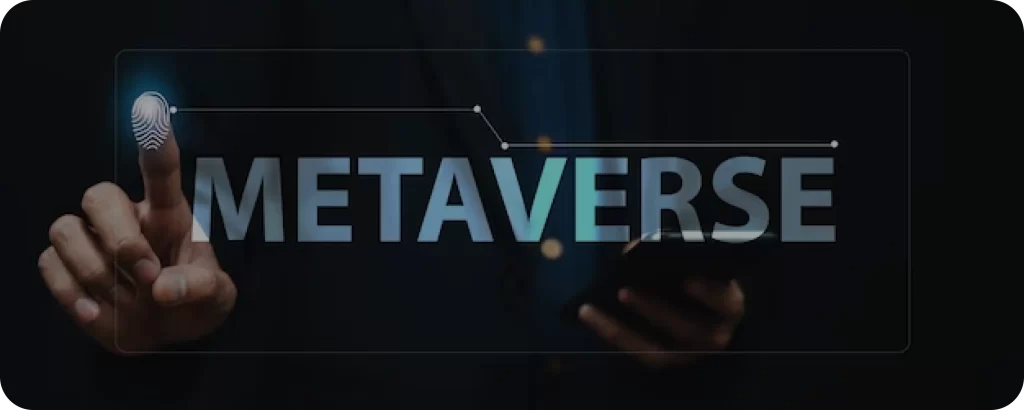Metaverse Phygital Marketing: How Brands Combine Digital and Physical Experiences

Physical and digital are combined to form the term “phygital.” It’s the idea of leveraging technology to create a connection between the virtual and the real worlds by giving users engaging, personalized experiences. To provide a seamless experience between people, places, and things, the phygital metaverse describes next-generation value transfers using sensors, mobile devices, extended reality (XR), and social networks. Even actual objects can be converted into digital assets using metaverse technology.
Implications for the Physical Metaverse
The metaverse is by definition a physical experience in and of itself. The implications for the physical metaverse are immense, even though the field is still young. Online consumer interactions will become increasingly interactive and individualized in the future, fully utilizing the variety of technical capabilities the metaverse has to offer. The boundaries between physical and digital will continue to fuzzer as digital-first initiatives reshape global sectors, leading to new exchanges that reinvent our connection with technology.
The term “phygital” refers to the application of technology to the real world rather than just using it to improve communication. It also has to do with how we relate to it and how it affects society. Businesses of all sizes may connect with customers in novel ways thanks to phygital to build brand equity.
Why is Blockchain Important For The Metaverse?
Thanks to cutting-edge technologies like augmented reality (AR), virtual reality (VR), and mixed reality, the digital economy is flourishing (MR). The effects of digitalization have spread beyond the information and communication technology industry, having real effects on several other businesses, including finance, retail, transportation, and hospitality. These trends are anticipated to continue as technology develops and Internet connection becomes more widespread.
Using your smartphone to effortlessly order and pick up items from a store, scan a QR code on a restaurant menu instead of holding it in your hand, or contactless payment. All of these modifications to the customer experience, particularly those brought about by the Corona epidemic, have a growing impact on how customers live their daily lives. The same holds for using an app to keep an eye on our health or determine whether we are close to someone who is ill. There is a point of intersection for all of these new functions. They are a component of the changes brought about by the development of digitalization as well as the physical world online.

Schedule a call to know more about Metaverse and the cost to create the App.
By offering an immersive playground that serves as a virtual link between the real and virtual worlds, the metaverse elevates consumer experiences. You’ll be able to easily interact with real-world items, displays, and IoT devices that also exist virtually in the metaverse. One of the most well-known applications of physical metaverse experiences is in the business world. In the coming years, the metaverse’s retail and eCommerce sectors are expected to grow rapidly as consumers seek out more convenient and engaging shopping experiences. Additionally, as more people accept technology, there will be more experiences that combine online and offline purchasing.
Additionally growing is phygital marketing. Retailers are attempting to appeal to customers’ emotions by fusing the best touch points from both markets. The objective is to develop a unique shopping experience. The time when customers entered a store without knowledge and were given advice by salespeople is coming to an end. Nowadays, practically every customer walks into a store with a clear goal in mind. The buyer has a clear notion of what they want after researching the desired goods online and reading reviews.
More and more companies want to join the metaverse. The metaverse AR & VR metaverse is made up of a variety of technologies that give people access to a virtual environment and open openings for businesses and their clients. Examples include blockchain development services, artificial intelligence (AI), virtual reality (VR), augmented reality service (AR), and so forth.
Understand How Analytics and Big Data Can Help You Become a Data-Driven Business
Physical and digital marketing are combined in phygital marketing and marketing campaigns to provide fresh, creative approaches to connecting with consumers and promoting goods and services. Omnichannel marketing has grown more significant as we spend more time in virtual environments. More and more businesses want to use the metaverse to grasp emerging advertising trends. Utilizing cutting-edge technology helps businesses interact with audiences and attract new clients. It also improves advertising security and enables brands to safeguard physical products.
Recent Blogs
-
Key Considerations for Hiring Expert Software Developers
-
A Comprehensive Guide to Augmented Reality (AR) App Development
-
Unleashing Business Potential: Achieving Massive Outcomes with Big Data Analytics Services
-
Leveraging Salesforce Customer Data Platform (CDP) to Understand and Engage Customers
-
What are the benefits of using virtual reality solutions?






